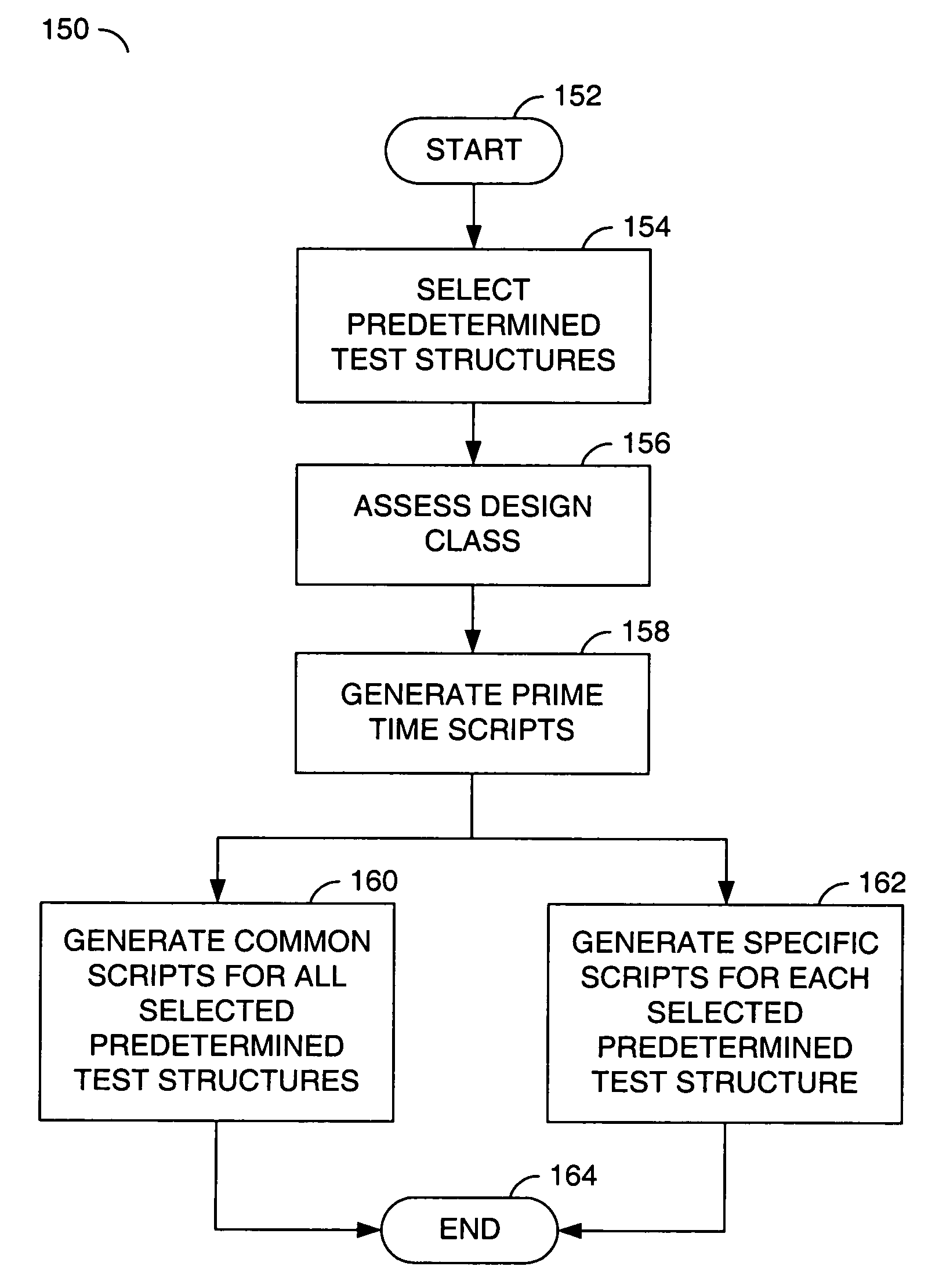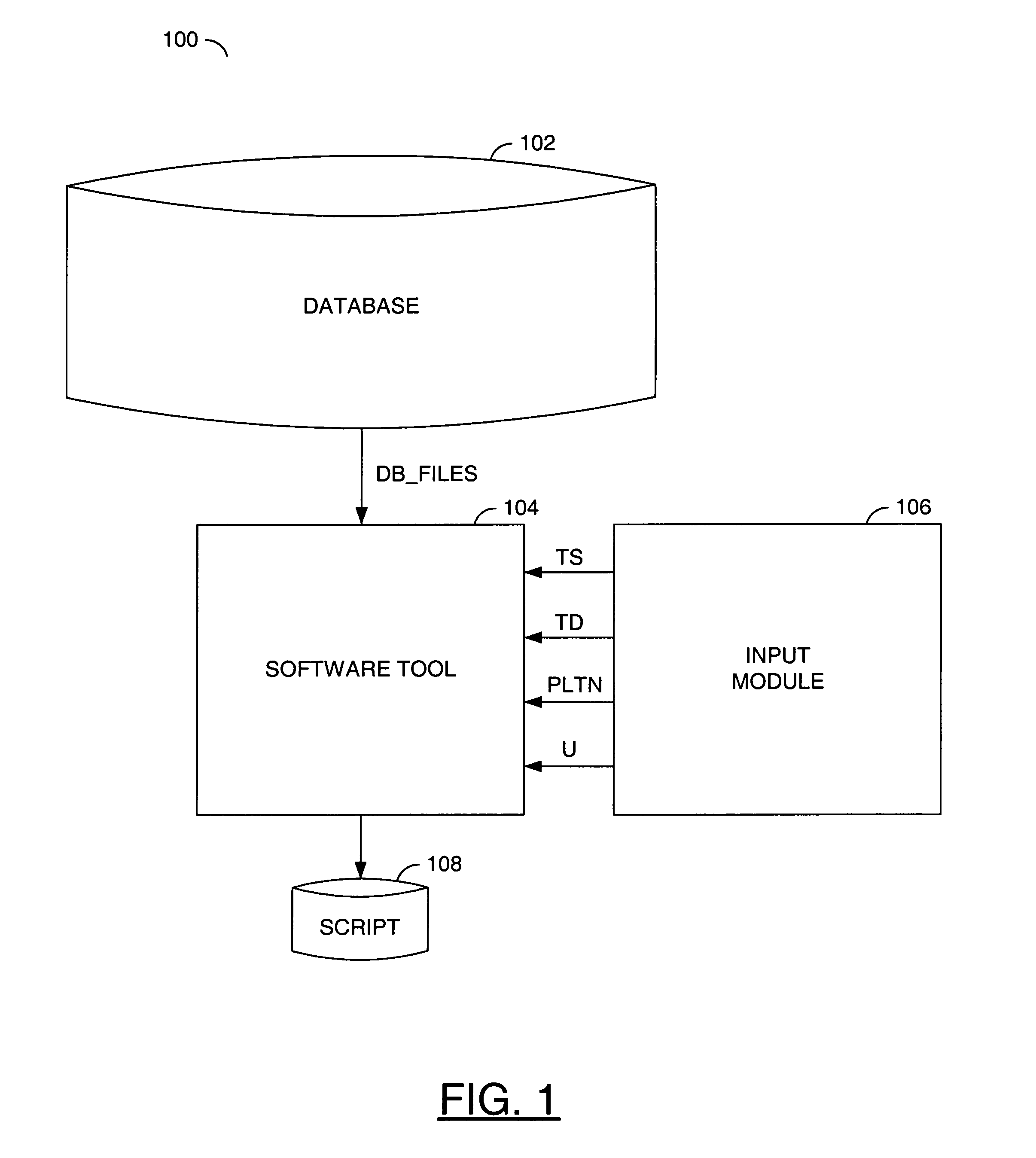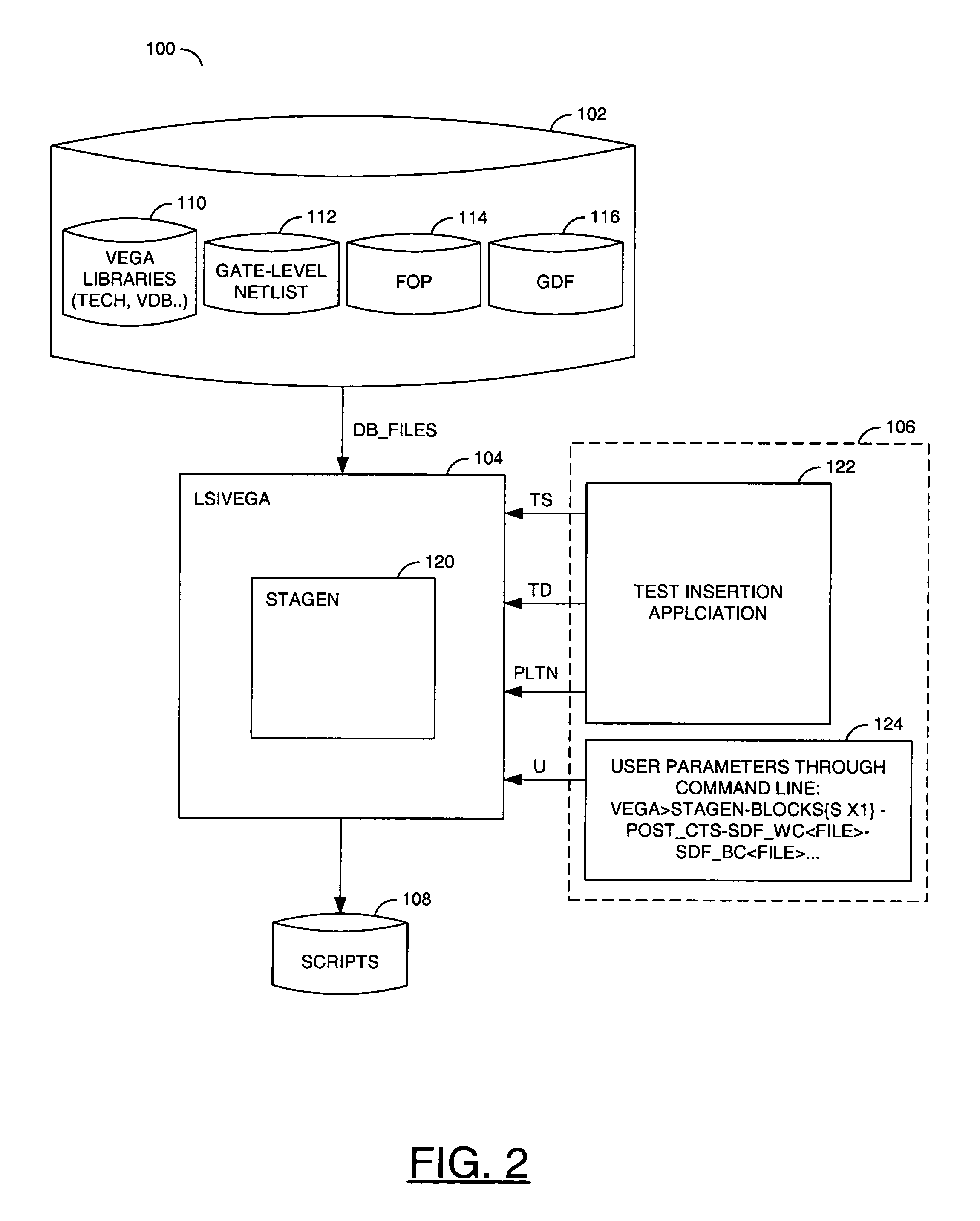Automatic generating of timing constraints for the validation/signoff of test structures
a technology of automatic generation and validation/signoff, applied in the field of electronic design automation, can solve the problems of unmanageable effort in many designs, inefficient simulation, and inability to verify test structures based on simulation, and achieve the effect of facilitating the debugging of simulation failures
- Summary
- Abstract
- Description
- Claims
- Application Information
AI Technical Summary
Benefits of technology
Problems solved by technology
Method used
Image
Examples
Embodiment Construction
[0017]Referring to FIG. 1, a block diagram of a system 100 is shown in accordance with a preferred embodiment of the present invention. The system 100 generally comprises a database 102, a software tool 104 and an input module 106. The database 102 may present database files (e.g., DB_FILES) to the software tool 104. The input module 106 may present a signal (e.g., TS), a signal (e.g., TD), a signal (e.g., PLTN), and a signal (e.g., U) to the software tool 104. The input module 106 may present information related to test structures over the signal TS. The test structures may be introduced in the design to provide a set of controls for testing predetermined nodes within an ASIC. The test structures may be introduced in the design to guarantee a fault-free IC and to increase the production yield for a customer. Each test structure may include test pins (e.g., both input and output) which may need to be controlled from top level functional pins during manufacturing tests. In general, t...
PUM
 Login to View More
Login to View More Abstract
Description
Claims
Application Information
 Login to View More
Login to View More - R&D
- Intellectual Property
- Life Sciences
- Materials
- Tech Scout
- Unparalleled Data Quality
- Higher Quality Content
- 60% Fewer Hallucinations
Browse by: Latest US Patents, China's latest patents, Technical Efficacy Thesaurus, Application Domain, Technology Topic, Popular Technical Reports.
© 2025 PatSnap. All rights reserved.Legal|Privacy policy|Modern Slavery Act Transparency Statement|Sitemap|About US| Contact US: help@patsnap.com



